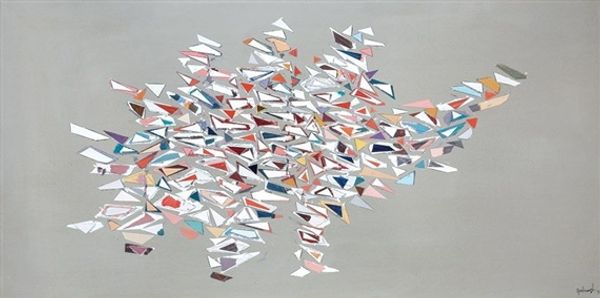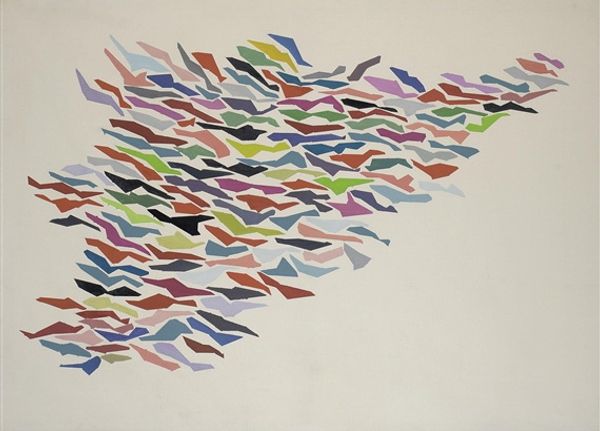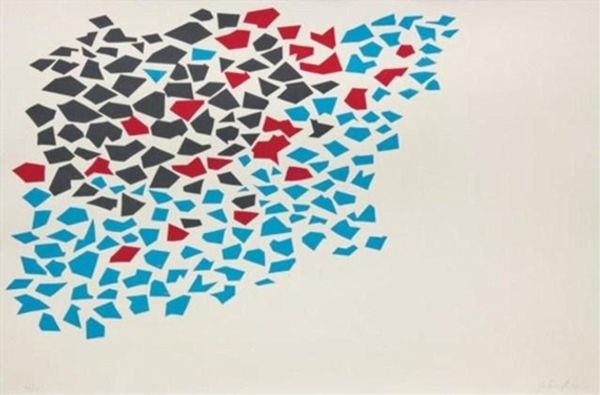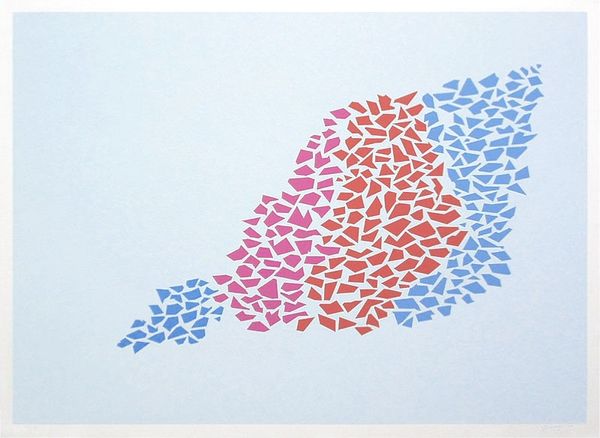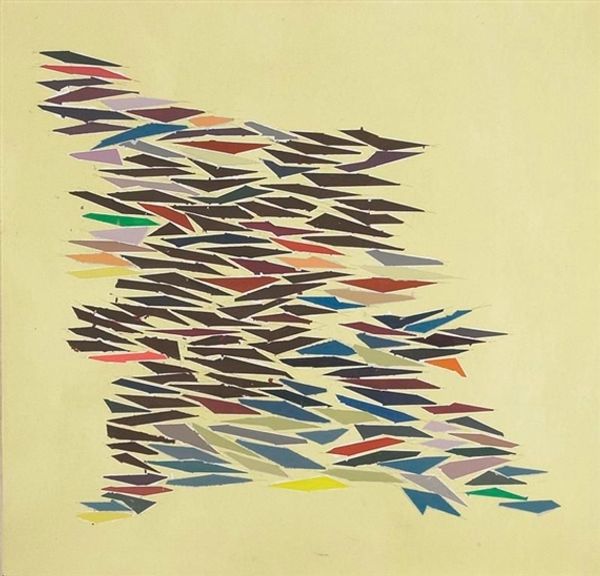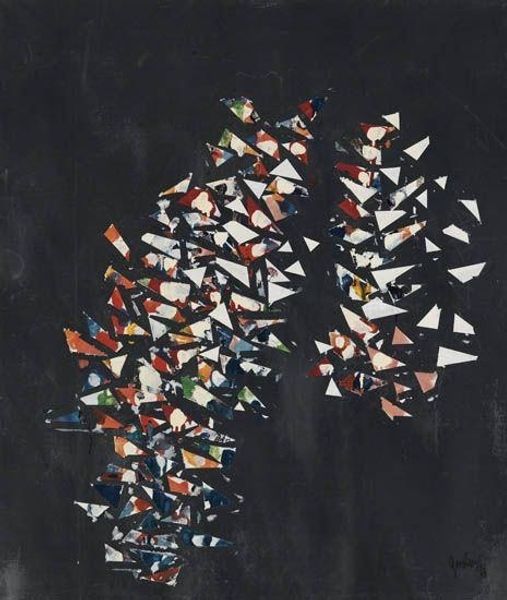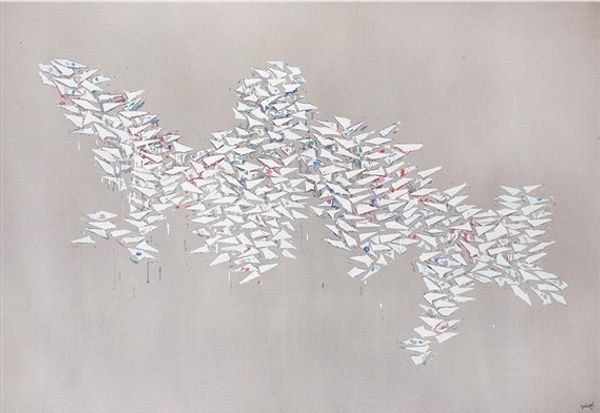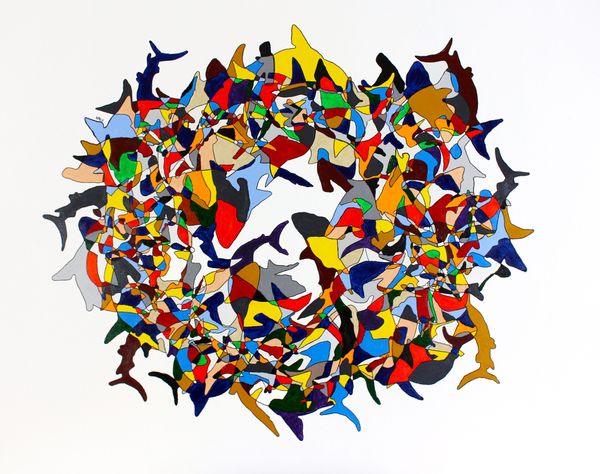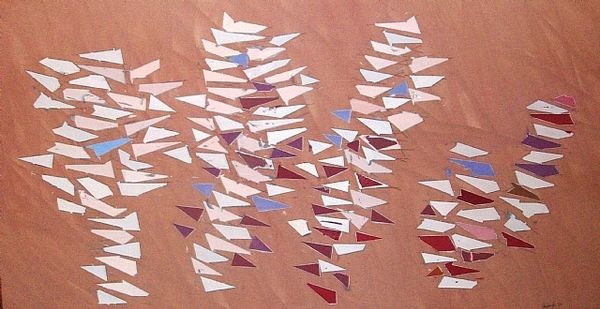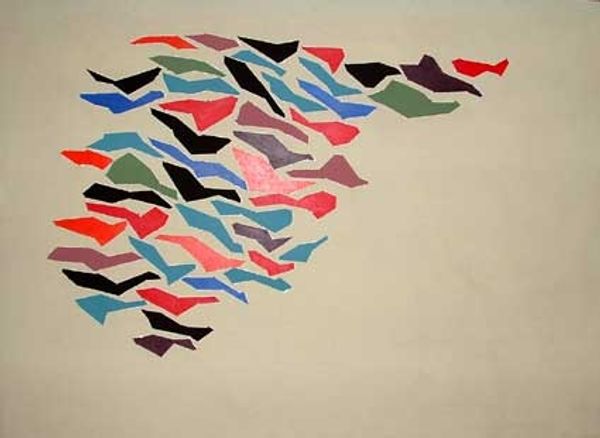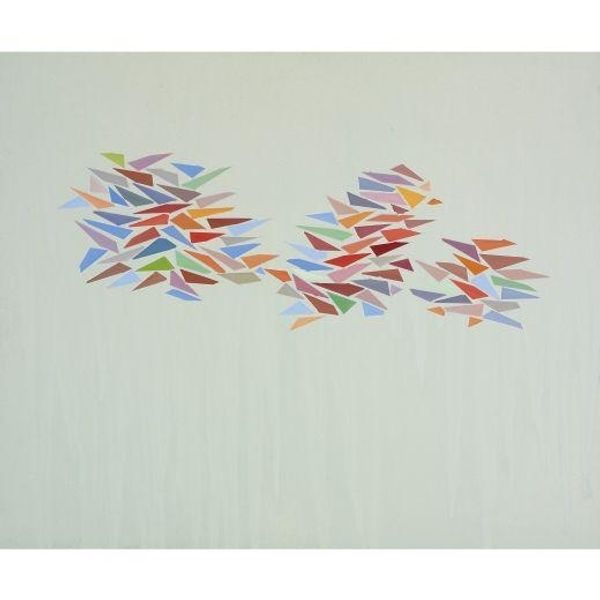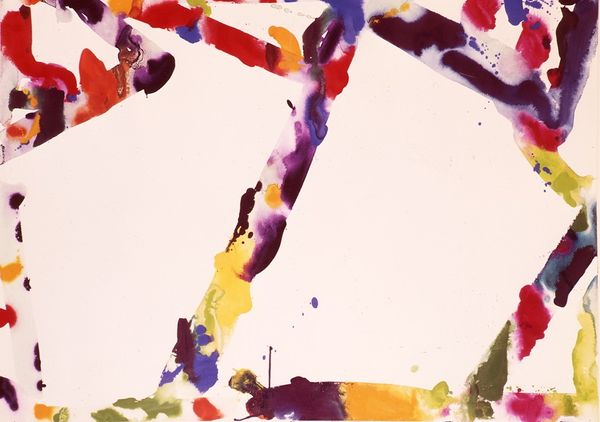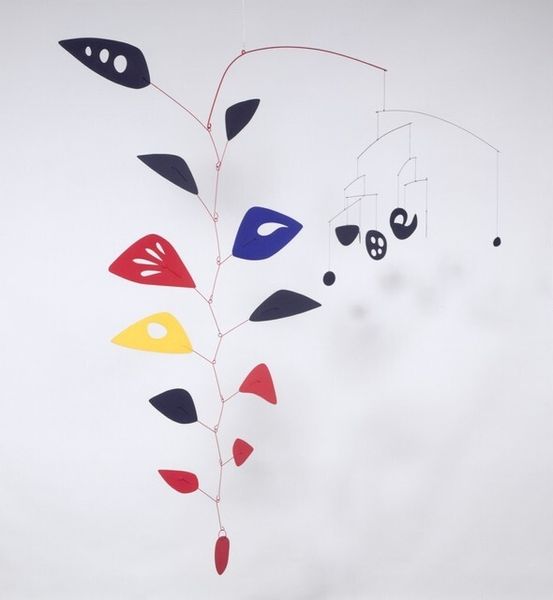
Copyright: Robert Goodnough,Fair Use
Curator: Robert Goodnough's "Color Shapes on Gray," completed in 1979 using acrylic paint, immediately strikes me with its vibrant energy. It feels like controlled chaos. Editor: I find the juxtaposition of fragmented shapes against the muted gray backdrop to be unsettling. It raises questions for me about societal fragmentation, particularly the isolation of individuals within a collective whole, a feeling all too familiar. Curator: I am intrigued by how Goodnough orchestrates the relationship between these seemingly disparate color fields. The shapes, with their distinct hues and edges, push and pull against one another creating an almost rhythmic visual experience. Notice the lack of hierarchy in placement, as this gives an illusion of egalitarianism between shapes, creating its own system of visual equality. Editor: Yet the lack of clear hierarchy also resonates with the way marginalized communities are often forced to vie for visibility and recognition within dominant structures. I wonder how color functions here within established societal hierarchies. What does it mean when some colours appear on the bottom left while others seem closer to the top, striving to ascend higher up within this symbolic landscape? Curator: The success here rests with how Goodnough achieves pictorial unity through his mastery of colour relationships and form. It’s about balancing dissonance with visual coherence, to not disrupt balance, but in its place promote visual appeal through geometrical cohesion. Editor: And what does that “visual appeal” mask, or rather reveal, about the state of society at the time? Can the artist remain neutral amid systemic inequality, or does abstraction necessarily implicate itself with the very forces at play in daily life? This piece invites that type of critical thought and, further, how movements like Pattern and Decoration—for which Goodnough is celebrated—interrogate these questions. Curator: The dialogue between abstraction and representation opens endless possibilities in the conversation about art history. To reflect further on this idea, the painting for me has been more illuminating when approached at a closer, structural angle. Editor: Absolutely. Viewing it through multiple lenses certainly allows us to ask critical questions about ourselves, the work, and the cultural context in which it was made.
Comments
No comments
Be the first to comment and join the conversation on the ultimate creative platform.
